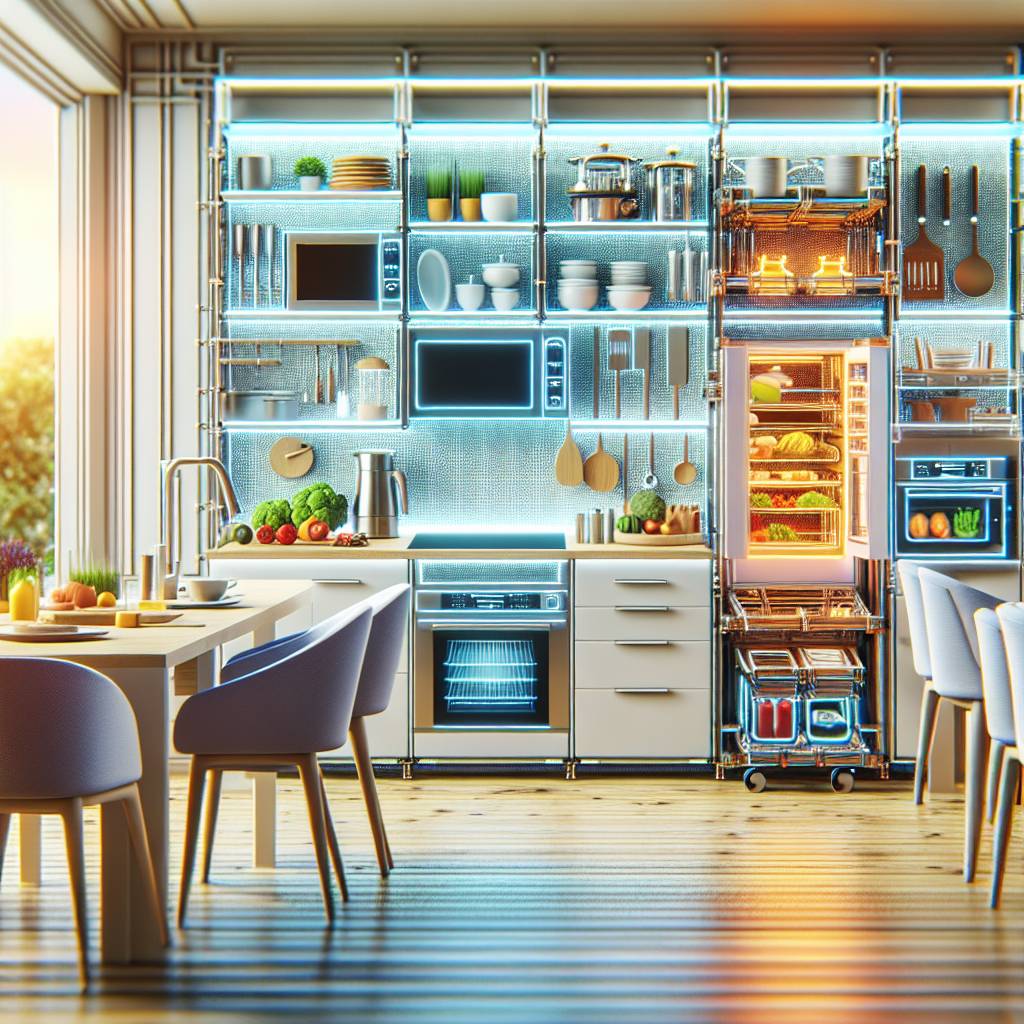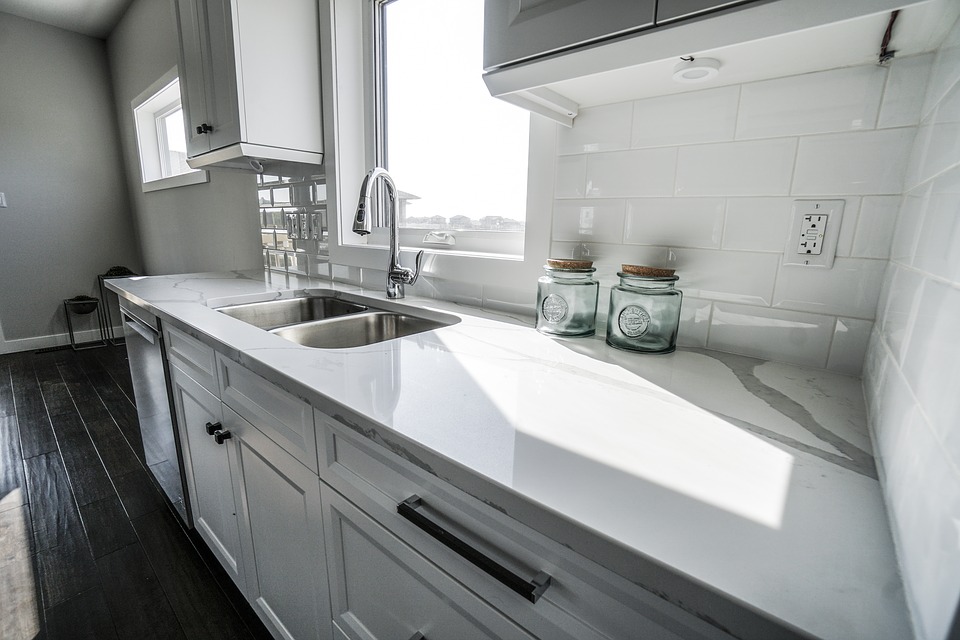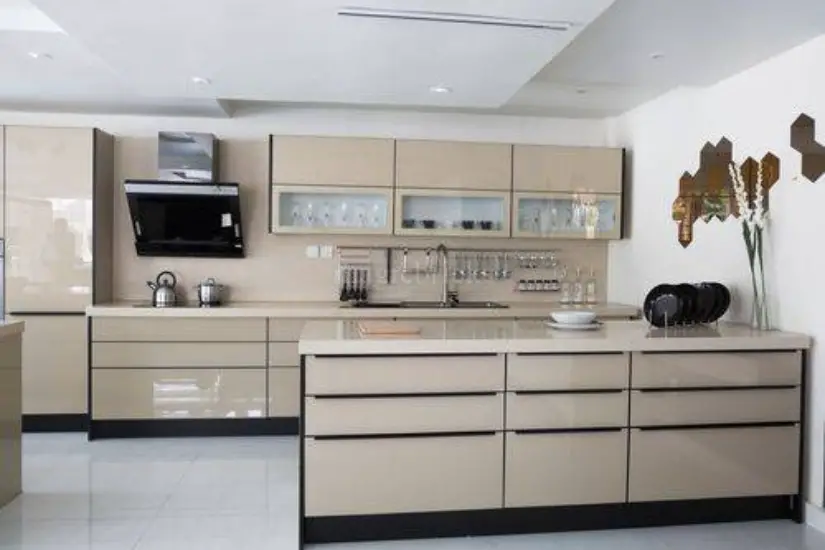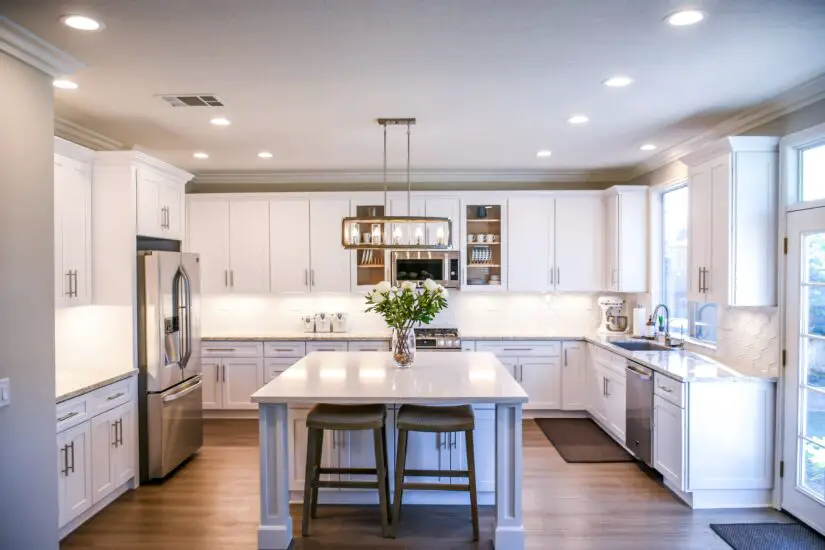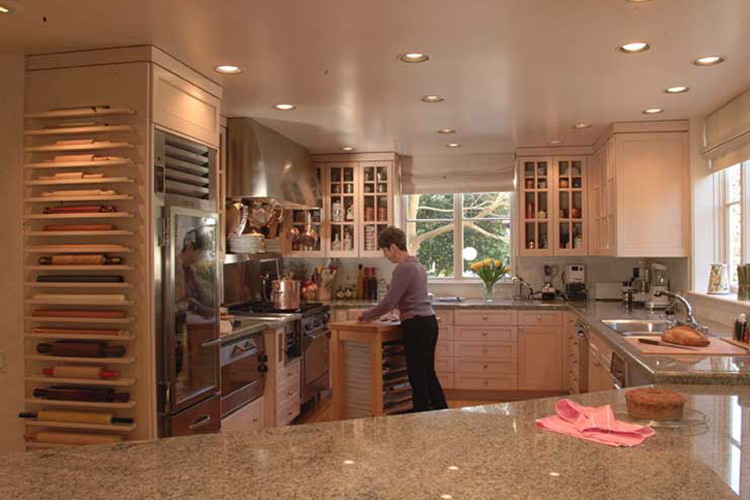Did you know that the average home chef spends over three hours a day in the kitchen? That’s a significant amount of time, and having an ergonomic kitchen can make those hours more enjoyable and less strenuous. From adjustable countertops to smart storage solutions, creating an ergonomic kitchen can revolutionize your cooking experience by reaching for bowls in a more efficient way.
We’ll explore how these features not only enhance comfort but also boost efficiency in meal preparation. Whether it’s incorporating easy-to-reach storage or investing in adaptable lighting, we’ve got you covered with practical tips to transform your kitchen into a haven for culinary creativity.
Key Takeaways
- Embracing kitchen ergonomics can significantly improve the functionality and comfort of your cooking space.
- Designing an ergonomic kitchen layout involves prioritizing ease of movement and accessibility to essential tools and appliances.
- Optimizing work surfaces, such as countertops and islands, can enhance efficiency and reduce strain during food preparation.
- Enhancing comfort at key stations, like the sink and stove, is crucial for promoting a more enjoyable cooking experience.
- Efficient storage solutions, including pull-out shelves and drawer organizers, contribute to a clutter-free and organized kitchen environment.
- Functional lighting in design not only enhances visibility but also plays a vital role in creating a safe and inviting culinary workspace.
Embracing Kitchen Ergonomics
Accessibility enhancement plays a crucial role in creating a user-friendly cooking space. By making kitchen tools and items easily reachable for all users, the design aims to enhance convenience and inclusivity. The significance of this aspect lies in its ability to cater to individuals with varying mobility challenges, ensuring that everyone, including the client, can navigate the kitchen effortlessly.
Designing for inclusivity involves considering the needs of all users, regardless of their physical abilities. For instance, lowering countertop heights or installing pull-out shelves can make it easier for individuals using wheelchairs or those with limited mobility to access items without straining themselves. This thoughtful approach not only promotes independence but also fosters a sense of empowerment within the kitchen environment.
Incorporating accessible features into the kitchen layout is akin to extending an invitation to every member of the household, encouraging them to participate in culinary activities without feeling hindered by inaccessible tools or storage areas. This not only enhances practicality but also nurtures a more cohesive and harmonious cooking experience for everyone involved.
The Ergonomic Kitchen Layout
Work Triangle Mastery
Mastering the work triangle is crucial. This involves optimizing the arrangement of the stove, sink, and refrigerator for maximum efficiency. By strategically placing these key elements in close proximity to each other, home chefs can minimize unnecessary movement during food preparation. For instance, having the sink near the stove allows for easy access to water when cooking or cleaning while maintaining a clear path between these areas ensures a smooth workflow.
A well-planned work triangle is essential for enhancing kitchen functionality. It reduces fatigue and strain by minimizing excessive walking back and forth between different stations during meal prep. Imagine trying to cook a meal with the refrigerator located far from both the stove and sink – this would result in constant movement across the kitchen space, leading to inefficiency and frustration. Therefore, mastering the work triangle not only optimizes workflow but also contributes to a more enjoyable cooking experience overall.
Smart Storage
Smart storage solutions play a significant role in creating an ergonomic kitchen environment at home. Utilizing intelligent storage options maximizes space utilization while ensuring everything has its designated place within arm’s reach. For example, incorporating pull-out shelves or drawers in lower cabinets allows easy access to pots, pans, or small appliances without needing to crouch down or rummage through cluttered spaces.
In addition to maximizing space usage, prioritizing accessibility and usability when choosing storage options streamlines kitchen organization for more efficient cooking experiences at home. Cabinets with adjustable shelving make it easier for homeowners to customize their storage according to their specific needs while keeping frequently used items within reach on open shelves can significantly reduce time spent searching through cluttered cupboards.
Open Access Routes
Creating clear pathways within your kitchen layout promotes seamless navigation throughout the space – an important aspect of an ergonomically designed culinary environment at home. Unobstructed access ensures that moving from one area of your kitchen (such as food prep zone)to another (like stovetop) doesn’t involve any unnecessary detours around obstacles like chairs or protruding cabinet doors.
Optimizing Work Surfaces
Correct Height Determination
Determining the correct height for kitchen work surfaces and appliances is crucial for ensuring comfort and reducing strain. It’s essential to customize these heights based on individual preferences and needs. For example, someone taller may prefer higher countertops to avoid stooping, while a shorter person might need lower counters for ease of use.
Proper alignment of counter and appliance heights is vital for creating an ergonomic work environment in the kitchen. This ensures that individuals can perform tasks comfortably without straining their backs or shoulders. By aligning these heights with the user’s specific requirements, it promotes better posture and reduces the risk of repetitive strain injuries.
Cooking Surface Maximization
Maximizing available cooking surfaces allows home chefs to efficiently prepare meals without feeling cramped or restricted by limited space. By optimizing countertop areas, individuals can create separate work zones for various tasks such as food prep, cooking, and plating. This enhances functionality by providing dedicated spaces for each step of the cooking process.
Efficiently utilizing cooking surfaces also involves making the most out of available countertop space. For instance, installing a pull-out cutting board over a cabinet drawer creates an additional area for meal preparation while keeping countertops clear. This not only maximizes usable cooking surfaces but also contributes to a more organized and streamlined kitchen environment.
Enhancing Comfort at Key Stations
Oven Optimization
Oven optimization plays a crucial role in enhancing comfort and efficiency. By incorporating user-friendly features such as side-swing doors or French doors, accessing the oven becomes much easier, reducing strain on the body. Placing ovens at an appropriate height can also prevent excessive bending or reaching, ensuring a more comfortable cooking experience.
Optimizing oven placement is essential for both safety and convenience. Placing the oven at an ideal height reduces the risk of burns and spills when handling hot dishes. Having the oven within close reach while standing in front of countertops can streamline cooking processes by minimizing unnecessary movements around the kitchen.
In terms of design, ergonomically friendly ovens may feature intuitive controls located at eye level, eliminating the need to bend down or stretch to adjust settings. This thoughtful design not only enhances accessibility but also contributes to a seamless cooking experience for home chefs.
Sink Convenience
Another vital aspect of creating an ergonomic kitchen is prioritizing sink convenience. Designing sinks with user comfort in mind involves considering factors such as depth, width, and orientation that cater to different users’ needs. For instance, installing a deep basin sink can accommodate larger cookware and reduce splashing during dishwashing activities.
Thoughtful sink placement within the kitchen layout ensures easy access from key workstations like prep areas or stovetops. By strategically positioning sinks closer to these stations, chefs can efficiently move between tasks without unnecessary physical strain or fatigue.
Moreover, integrating features like pull-down faucets with adjustable spray patterns enhances functionality and ease of use for individuals with varying mobility levels. These practical enhancements contribute significantly to improving overall user experience by simplifying daily kitchen tasks while maintaining ergonomic principles.
Efficient Storage Solutions
Efficient storage solutions play a crucial role. One of the key features that can greatly enhance the functionality and convenience of a kitchen is the implementation of pull-out pantry systems. Pull-out pantries offer accessible storage for various food items, ensuring that everything is within easy reach.
By utilizing pull-out pantry solutions, home chefs can significantly improve organization and visibility in their kitchens. These designs allow for maximization of pantry space while also ensuring that stored items are easily visible and accessible. For example, storing canned goods, spices, or baking ingredients in a pull-out pantry allows individuals to quickly locate what they need without having to rummage through cluttered shelves.
Another essential aspect of an ergonomic kitchen is strategic utensil placement. Placing utensils in convenient locations ensures quick access during meal preparation, ultimately enhancing efficiency and reducing unnecessary movements around the kitchen. By organizing utensils based on frequency of use, home chefs can optimize their workflow and create a more ergonomic cooking environment.
Optimizing utensil placement not only reduces clutter but also streamlines the cooking process by minimizing time spent searching for specific tools. For instance, keeping frequently used spatulas and mixing spoons near the stovetop eliminates the need to cross the kitchen multiple times while preparing a meal.
Functional Lighting in Design
Lighting for Comfort
Ergonomic kitchen features for home chefs should include well-planned lighting solutions to create a comfortable cooking environment. By implementing ambient lighting, such as ceiling fixtures and wall sconces, the kitchen can exude a cozy atmosphere that promotes relaxation and enjoyment during meal preparation. This type of lighting helps reduce eye strain and provides an inviting ambiance for the chef.
Enhancing visual comfort is crucial when designing the kitchen’s lighting layout. A well-lit space contributes to a sense of ease while working in the kitchen, making it easier to read recipes, measure ingredients accurately, and perform other intricate tasks. By prioritizing ambient lighting over harsh overhead lights or dim corners, home chefs can ensure that their cooking area remains visually appealing and conducive to creativity.
Lighting for Efficiency
To enhance efficiency in meal preparation, incorporating task lighting is essential. Task lighting illuminates specific work areas like countertops and stovetops where precise actions take place during cooking. This focused illumination enables home chefs to chop vegetables, mix ingredients, or check food doneness with clarity and accuracy.
Moreover, integrating energy-efficient lighting options into the kitchen design not only aligns with sustainable practices but also contributes to improved functionality. LED bulbs are excellent choices due to their longevity and low energy consumption compared to traditional incandescent or fluorescent lights. By opting for these modern alternatives, homeowners can reduce electricity costs while maintaining optimal brightness levels throughout their culinary space.
Optimizing lighting placement is another key factor in creating an efficient kitchen environment. Strategic positioning of light sources helps minimize shadows cast on work surfaces—ensuring better visibility during food preparation activities like slicing meat or kneading dough.
Implementing Ergonomic Design Tips
Bench Height Importance
The bench height plays a crucial role in ensuring user comfort and functionality. Determining the ideal bench heights involves considering the individual’s physical dimensions and movements. For instance, customizing bench heights can accommodate diverse user needs, such as individuals of varying heights or those with mobility limitations. By emphasizing the significance of appropriate bench height in kitchen design, home chefs can work comfortably and maintain good posture while preparing meals.
Customizing bench heights is essential because it allows users to perform tasks without straining their back or shoulders. For example, taller individuals may require higher benches to avoid bending over excessively while working, which could lead to discomfort or even injury over time. On the other hand, shorter individuals would benefit from lower benches that enable them to reach items easily without stretching or using step stools frequently. This customization promotes a more inclusive and adaptable kitchen environment that caters to everyone’s needs.
Ample Range Space
Ample space around cooking ranges is another critical aspect of ergonomic kitchen design for home chefs. Allocating sufficient room around cooking ranges ensures safe and convenient use during meal preparation. When planning range space, ventilation and safety measures must also be considered to prevent accidents such as burns or fires caused by overcrowding near the stovetop. Home chefs should have enough clearance around cooking appliances to move freely without risking contact with hot surfaces or cookware.
Providing ample room for maneuvering around cooking ranges contributes not only to safety but also efficiency in the kitchen. With adequate space, home chefs can access ingredients and utensils easily while multitasking during food preparation. This setup allows for better organization of cookware and reduces clutter in the immediate vicinity of the stove or oven.
Discovering Efficiency Tricks
Clever Kitchen Design
Creating an ergonomic kitchen involves implementing innovative solutions to optimize functionality. This includes installing pull-out shelves and drawers for easy access to pots, pans, and utensils. By integrating smart technology like motion-sensor faucets or voice-activated appliances, home chefs can streamline their cooking process.
For instance, a pot-filling faucet with a retractable hose makes filling large pots effortless. Embracing creative approaches such as customizing storage solutions based on individual needs can significantly enhance the efficiency of a kitchen. For example, adjustable shelving allows for easy organization and customization of storage space according to the size of items.
Moreover, incorporating clever kitchen design features means prioritizing user-friendly elements that enhance overall comfort in the kitchen. This could involve strategically placing task lighting above work areas or installing soft-closing cabinet doors to reduce noise and prevent slamming accidents.
Balancing aesthetics with practicality is crucial in delivering a satisfying culinary experience at home. For instance, selecting durable yet visually appealing materials for countertops and flooring ensures both longevity and visual appeal in the kitchen space.
Comfort and Convenience
In addition to clever design features, focusing on creating a comfortable and convenient cooking environment is essential for an ergonomic kitchen setup. Prioritizing user-friendly features such as height-adjustable countertops or easily accessible storage options contributes to enhancing overall comfort while working in the kitchen.
Furthermore, considering factors like proper ventilation systems or installing ergonomic seating arrangements also play a vital role in promoting comfort during extended cooking sessions. An example would be investing in high-quality anti-fatigue mats placed near food preparation areas to alleviate stress on feet during prolonged standing periods.
Wrapping Up Ergonomic Considerations
Key Design Considerations
Several key design considerations play a crucial role in creating an efficient and comfortable culinary space. The layout of the kitchen, the arrangement of appliances, and the accessibility of essential tools are all significant factors that influence the overall ergonomic design.
Efficiently organizing the kitchen layout is essential for optimizing workflow. Placing frequently used items within arm’s reach reduces unnecessary movements and minimizes strain on the body. For instance, positioning cooking utensils near the stove and storing commonly used ingredients close to food preparation areas can streamline cooking processes.
Ensuring adequate lighting in work areas is vital for enhancing visibility and reducing eye strain during food preparation. Proper illumination not only contributes to safety but also promotes a more pleasant cooking experience. Integrating adjustable lighting options allows home chefs to customize brightness levels according to specific tasks, such as chopping vegetables or reading recipes.
Furthermore, incorporating adjustable countertops and work surfaces enables individuals to customize their kitchen environment based on their height and comfort preferences. This adaptability ensures that home chefs can maintain proper posture while performing various culinary tasks, ultimately minimizing physical discomfort associated with prolonged standing or repetitive motions.
Closing Thoughts
You’ve now unlocked the secrets to creating an ergonomic kitchen that caters to your every culinary need. By embracing the principles of kitchen ergonomics, optimizing work surfaces, enhancing comfort at key stations, and implementing efficient storage and lighting solutions, you’re well on your way to transforming your cooking space into a chef’s haven. Remember, it’s not just about functionality; it’s about creating a space that aligns with your movements and enhances your overall cooking experience.
So, roll up your sleeves, put on your chef’s hat, and start implementing these ergonomic design tips. Discover the efficiency tricks that work best for you and embrace the joy of cooking in a kitchen tailored to your needs. Your journey to a more ergonomic and efficient kitchen starts now!
Frequently Asked Questions
What is kitchen ergonomics?
Kitchen ergonomics focuses on designing and arranging kitchen spaces to optimize efficiency, comfort, and safety for the user. It involves considering factors like workflow, accessibility, and ease of use in the kitchen layout and features.
How can I enhance comfort at key stations in my kitchen?
You can enhance comfort at key stations by incorporating adjustable countertops to accommodate different tasks, using anti-fatigue mats to reduce strain while standing, and ensuring that frequently used tools and ingredients are easily accessible.
What are some efficient storage solutions for an ergonomic kitchen?
Efficient storage solutions include pull-out shelves for easy access to items at the back of cabinets, vertical dividers for trays and cutting boards, drawer organizers for utensils, as well as overhead racks or hooks for pots and pans.
Why is functional lighting important in a kitchen’s design?
Functional lighting is crucial in a kitchen’s design as it ensures proper visibility during food preparation. It helps prevent accidents, enhances task performance, creates ambiance, and contributes to the overall safety and functionality of the space.
How do I implement ergonomic design tips in my own kitchen?
You can implement ergonomic design tips by prioritizing workflow when arranging your workspace, choosing appliances with user-friendly features such as adjustable racks or easy-to-reach controls. Consider utilizing soft-close hinges on cabinet doors to minimize strain on joints.
